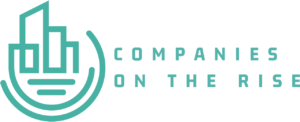Understanding Inner Child Healing
Inner child healing is a powerful process that helps individuals reconnect with their childhood experiences, emotions, and unmet needs. Often, unresolved childhood trauma can affect adult relationships, self-esteem, and emotional well-being. By addressing these wounds, individuals can release old patterns and develop healthier coping mechanisms. The practice involves recognizing the inner child’s voice, validating emotions, and nurturing self-compassion. Therapists and coaches often use inner child healing techniques to help clients navigate emotional challenges more effectively. Through guided visualization, journaling, and therapeutic exercises, participants learn to identify triggers linked to past experiences. Understanding the inner child is not just about revisiting the past; it is about creating a foundation for emotional freedom and personal growth.
The Purpose of Inner Child Healing Certification
Earning an inner child healing certification offers credibility and structure to anyone wanting to incorporate this modality into their practice. Certification validates a practitioner’s knowledge, skills, and ability to guide clients through sensitive emotional work safely. It differentiates professionals from untrained practitioners, enhancing trust and confidence in their services. Certified practitioners can offer specialized workshops, one-on-one sessions, and group programs with authority. This credential also allows professionals to market themselves effectively within the wellness and therapy industries. Inner child healing certification ensures that techniques are applied ethically and responsibly, providing a framework for success. For those passionate about emotional healing, certification is an investment in both personal and professional development.
Core Components of Inner Child Healing Programs
Programs designed for inner child healing certification cover a wide range of essential topics. Participants learn to recognize and process emotional trauma, understand attachment styles, and apply therapeutic interventions. Many programs include practical exercises such as art therapy, guided visualization, somatic practices, and journaling to foster emotional release. Certification courses often emphasize self-compassion, mindfulness, and communication skills tailored to sensitive emotional work. Most programs are structured to combine theory, case examples, and hands-on practice to build confidence in applying techniques. Duration and format vary, with options for intensive short-term courses or extended programs spanning several months. By the end of the course, participants are equipped to support clients in meaningful, transformative ways.
Benefits of Earning an Inner Child Healing Certification
An inner child healing certification provides numerous benefits that extend beyond professional recognition. Practitioners can expand their service offerings, attracting clients seeking emotional healing, trauma support, or personal growth guidance. Certification can improve client retention by establishing trust and showcasing expertise in a specialized area of therapy. Professionals may experience increased earning potential and the ability to design customized programs such as workshops, retreats, or online courses. Personal benefits are equally significant, including enhanced self-awareness, emotional intelligence, and deeper interpersonal relationships. Certified practitioners often notice their own healing and emotional growth as they work with clients. Integrating inner child work with other therapeutic modalities enhances overall holistic wellness practices, making services more comprehensive and impactful.
Who Can Pursue an Inner Child Healing Certification
This certification is suitable for a wide range of professionals and individuals committed to emotional healing. Therapists, life coaches, counselors, and wellness practitioners can gain specialized skills to serve clients effectively. Individuals seeking personal growth or self-healing may also benefit, as the program provides tools for addressing unresolved emotional patterns. Most programs have few prerequisites, though prior experience in therapy, coaching, or mental health support can be helpful. Those with a passion for helping others navigate emotional challenges are ideal candidates. The certification empowers participants to lead workshops, support groups, or one-on-one healing sessions confidently. Anyone dedicated to creating positive emotional transformation can pursue this credential successfully.
How to Choose the Right Inner Child Healing Certification Program
Selecting the right certification program is critical to gaining the full benefits of inner child healing training. Consider factors such as accreditation, instructor expertise, and program structure when evaluating options. Decide whether an online or in-person program suits your learning style and professional needs. Evaluate the balance between theory, practical exercises, and client application opportunities. Look for programs that offer ongoing support, mentorship, or networking opportunities for graduates. Ensure the program aligns with ethical standards and emphasizes trauma-informed practices. Asking questions about expected outcomes, curriculum, and certification recognition can guide you toward a program that fits your professional goals.
Steps to Integrate Inner Child Healing into Your Practice
Certified practitioners can apply their skills in various ways to enhance their services and impact clients. Begin by incorporating inner child healing exercises into one-on-one sessions, using techniques such as guided imagery, journaling, or role-play. Consider developing specialized workshops or group programs focusing on emotional awareness, self-compassion, and trauma release. Creating retreats or online courses can expand reach and accessibility for clients who prefer flexible learning options. Marketing services as a certified inner child healing practitioner can attract clients seeking targeted emotional healing. Collaboration with other wellness professionals can provide a holistic approach and additional credibility. Continual practice, supervision, and professional development help maintain skill proficiency and client outcomes.
Challenges and Misconceptions About Inner Child Healing
Many people misunderstand inner child healing as merely “revisiting childhood” without real therapeutic value. Others fear that addressing past trauma will overwhelm clients or trigger intense emotions. Certified practitioners learn to manage these challenges with proper techniques, emotional support, and professional boundaries. Some practitioners may struggle with their own emotional triggers while guiding clients. Regular self-care, supervision, and ongoing education help mitigate these challenges. Awareness of common misconceptions allows practitioners to educate clients and create a safe, supportive environment. A commitment to ethical, trauma-informed practice ensures that inner child healing remains a constructive and transformative experience.
Frequently Asked Questions (FAQ)
What is the typical cost of an inner child healing certification? Costs vary depending on program duration, accreditation, and format but usually range from $500 to $2,000.
How long does it take to complete certification? Certification programs can last from a few weeks to several months, depending on the depth and structure of the curriculum.
Can certification be earned online? Yes, many programs offer flexible online options while maintaining interactive, hands-on learning experiences.
Is prior therapy or coaching experience required? While helpful, most programs do not require previous professional experience; they welcome anyone committed to personal or professional development.
How can certification impact my professional credibility? Certification establishes expertise, enhances client trust, and can differentiate your practice in a competitive wellness market.
Can I combine inner child healing with other therapies? Absolutely. Inner child healing complements many modalities, including mindfulness, somatic therapy, life coaching, and holistic wellness practices.
Are there continuing education opportunities after certification? Many programs offer advanced courses, mentorship, and workshops for ongoing professional growth.
Takeaway
Earning an inner child healing certification equips professionals and individuals with the tools to address emotional wounds effectively. It provides credibility, professional growth opportunities, and the ability to guide others toward emotional freedom. By understanding the inner child, applying ethical techniques, and integrating these practices into your services, certified practitioners can create transformative experiences for clients. For anyone passionate about emotional healing, this certification offers a pathway to deepen their impact and enhance both personal and professional development.










